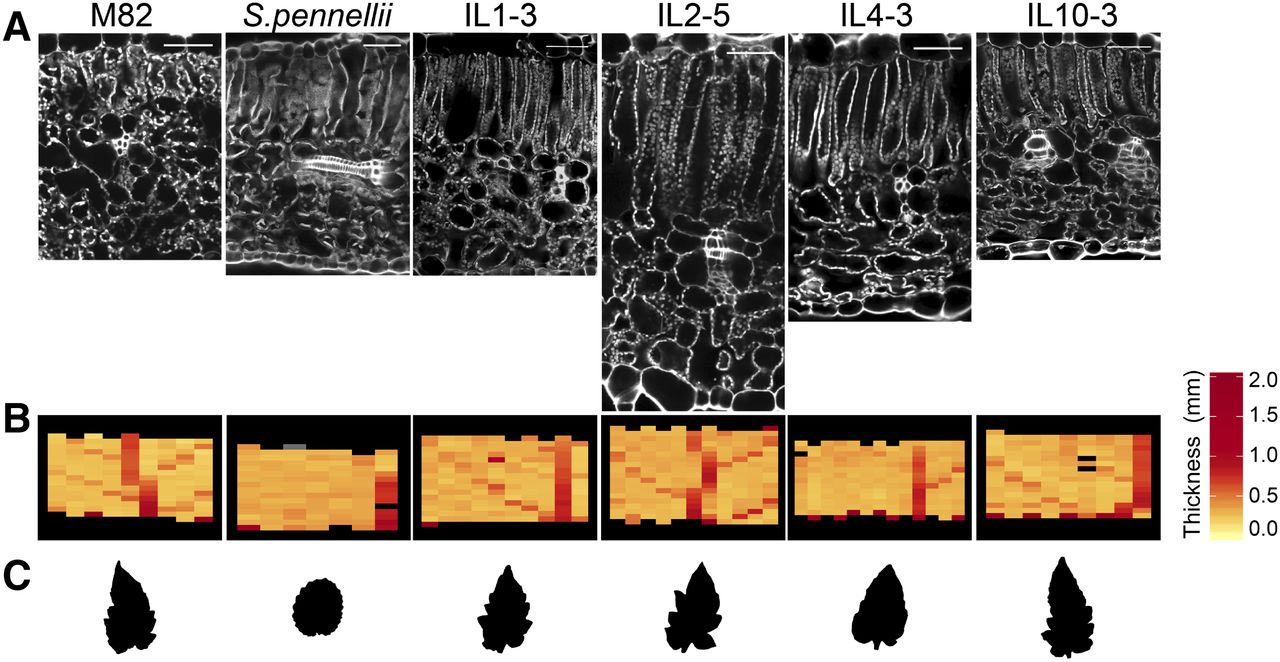
作物的野生亲缘种常常比现代作物品种更能抵抗环境胁迫因素。因此,野生亲缘种可能是某些提高胁迫耐受性或抵抗力基因的来源。来自沙漠环境的野生番茄Solanum pennellii具有较厚的叶子,在限水条件下表现出良好的适应性。本文利用LemnaTec实验室型表型成像系统HTS进行表型分析,结果表明Solanum pennellii在限水条件下能持续生长,而常见的番茄品种(S. lycopersicum)停止生长,叶面积开始由于枯萎而收缩。Solanum pennellii即使没有供水,叶面积也没有缩小,避免了枯萎。虽然沙漠番茄在潮湿的土壤中生长速度比普通番茄生长慢,但是前者能够保持生长并防止干旱发生。

Desert-adapted tomato plants have thicker leaves than domesticated tomato and are resistant to drought. A, Thickness across leaflet blades of domesticated (S. lycopersicum M82) and desert-adapted (S. pennellii) tomatoes measured with a custom-built dual confocal profilometer device (Supplemental Fig. S1). The median thickness of the S. lycopersicum leaflet shown here is 211 μm, and that for S. pennellii is 294 μm. B, Confocal images of propidium iodide-stained leaflet cross sections. Bars = 200 μm. C, Total shoot area normalized by taking the square root of pixels (px) from top-view phenotyping images over 16 d in three water treatments (n = 8). Gray shading reflects se.

Anatomical manifestations of thicker leaves. A, Confocal images of propidium iodide-stained cross sections of field-grown M82, select ILs, and S. pennellii grown in greenhouse conditions. Bars=50μm. B and C,Representative leaf thickness plots (B) and leaflet binary images of field-grown plants (C) as for A.
Coneva, Viktoriya; Frank, Margaret H.; Balaguer, Maria A. de Luis; Li, Mao; Sozzani, Rosangela; Chitwood, Daniel H. (2017): Genetic Architecture and Molecular Networks Underlying Leaf Thickness in Desert-Adapted Tomato Solanum pennellii. In: PLANT PHYSIOLOGY 175 (1), S. 376–391. DOI: 10.1104/pp.17.00790.


